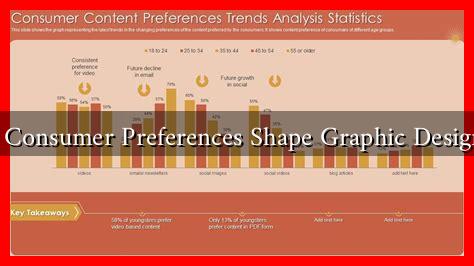-
Table of Contents
How Do Consumer Preferences Shape Graphic Design Trends?
Graphic design is an ever-evolving field that reflects the tastes, values, and preferences of consumers. As society changes, so too do the visual languages that communicate ideas, products, and brands. Understanding how consumer preferences shape graphic design trends is crucial for designers, marketers, and businesses aiming to connect with their audiences effectively. This article explores the intricate relationship between consumer preferences and graphic design trends, highlighting key factors that influence this dynamic.
The Influence of Cultural Shifts
Cultural shifts play a significant role in shaping consumer preferences, which in turn influence graphic design trends. As societal values evolve, so do the aesthetics that resonate with consumers. For instance, the rise of environmental consciousness has led to a surge in sustainable design practices. Brands are increasingly adopting eco-friendly materials and minimalist designs that reflect a commitment to sustainability.
- Minimalism: The minimalist design trend, characterized by simplicity and functionality, has gained traction as consumers seek clarity and authenticity in a cluttered digital landscape.
- Inclusivity: Graphic design is also becoming more inclusive, with brands embracing diverse representations in their visuals to resonate with a broader audience.
- Social Justice: The recent focus on social justice has prompted brands to adopt bold, activist-oriented designs that align with consumer values.
The Role of Technology
Technological advancements have transformed the way consumers interact with design. The rise of social media platforms, mobile devices, and augmented reality has created new avenues for graphic design to flourish. Designers must now consider how their work will be viewed across various screens and formats.
- Responsive Design: With the increasing use of mobile devices, responsive design has become essential. Consumers expect designs that adapt seamlessly to different screen sizes.
- Interactive Elements: The integration of interactive elements in graphic design, such as animations and micro-interactions, caters to consumers’ desire for engaging experiences.
- Augmented Reality: Brands are leveraging augmented reality to create immersive experiences, allowing consumers to interact with products in innovative ways.
Consumer Behavior and Market Research
Understanding consumer behavior is vital for designers aiming to create relevant and appealing visuals. Market research provides insights into consumer preferences, enabling designers to tailor their work accordingly. For example, a study by Adobe found that 61% of consumers prefer brands that use custom graphics over stock images, highlighting the importance of originality in design.
Additionally, consumer feedback can directly influence design trends. Brands that actively engage with their audience through social media and surveys can gain valuable insights into what resonates with their target market. This feedback loop allows designers to adapt their work to meet evolving consumer expectations.
Case Studies: Brands Leading the Way
Several brands exemplify how consumer preferences can shape graphic design trends:
- Airbnb: The company’s rebranding in 2014 focused on inclusivity and community, using a simple yet powerful logo and a warm color palette that resonates with travelers seeking authentic experiences.
- Spotify: Spotify’s use of vibrant colors and dynamic graphics reflects its youthful audience and the ever-changing nature of music consumption.
- Apple: Apple’s minimalist design philosophy aligns with consumer preferences for simplicity and elegance, reinforcing its brand identity as a leader in innovation.
Conclusion
Consumer preferences are a driving force behind graphic design trends, influencing everything from aesthetics to functionality. As cultural shifts, technological advancements, and consumer behavior continue to evolve, designers must remain adaptable and responsive to these changes. By understanding the intricate relationship between consumer preferences and graphic design, brands can create compelling visuals that resonate with their audiences and stand out in a competitive marketplace.
In summary, the interplay between consumer preferences and graphic design trends is a dynamic and ongoing process. Designers who stay attuned to these shifts will not only enhance their creative output but also foster deeper connections with consumers, ultimately driving brand loyalty and success.
For further insights into the impact of consumer behavior on design, you can explore resources from Adobe.

